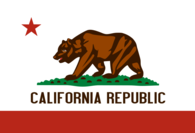In the aftermath of the November presidential election, Towleroad is exploring several legal issues related to the result, the incoming administration, and the future of democracy in America. If you have any questions, please email law@towleroad.com.
 Hillary Clinton's lead in the popular vote now exceeds 2.5 million. She has a larger margin of the popular vote than 10 presidents. Yet she currently trails Donald J. Trump in the Electoral College 306 to 232. The winner of the Electoral College vote becomes President. The Democratic Party nominee has won the popular vote in 6 of the last 7 presidential elections. He (and now, or she) has only actually won the presidency 4 times in that span. The Electoral College represents a threat to democracy. In fact, it was designed to be.
Hillary Clinton's lead in the popular vote now exceeds 2.5 million. She has a larger margin of the popular vote than 10 presidents. Yet she currently trails Donald J. Trump in the Electoral College 306 to 232. The winner of the Electoral College vote becomes President. The Democratic Party nominee has won the popular vote in 6 of the last 7 presidential elections. He (and now, or she) has only actually won the presidency 4 times in that span. The Electoral College represents a threat to democracy. In fact, it was designed to be.
There are a lot of myths swirling around about the Electoral College: that it was created to protect small states, or because the Framers hated democracy, or because Alexander Hamilton needed a good topic for a rap.
The Electoral College was created to protect one thing: slavery. What's more, the way it operates today dilutes the voting power of states with large urban environments, which generally have higher populations of persons of color and sexual minorities. Therefore, an institution created to protect slavery continues to burden minorities in America.

During the Constitutional Convention in Philadelphia, James Wilson, a Pennsylvania delegate, proposed the direct election of the president. James Madison, a Virginia delegate, argued against it for political reasons: the South would oppose it, he said. “The right of suffrage was much more diffusive in the Northern than the Southern States; and the latter could have no influence in the election on the score of Negroes,” Madison later wrote.
He meant that there were many more voters in the North because the millions of slaves in the South could not vote. So if we elected the President directly, the South would always be wiped out.
A compromise was proposed: The President would be elected via the vote of the Electoral College. And the votes of the Electoral College would be allocated to states based on the states' numbers of Representatives in the House and Senators in the Senate.
The number of representatives in the House was “determined by adding to the whole Number of free Persons, including those bound to Service for a Term of Years, and excluding Indians not taxed, three fifths of all other Persons.” That quote comes from the original version of Article I, Section 2 of the Constitution.
The result was that slave states in the South received extra voting power, and as the number of slaves increased in a state, that state's electoral power increased! Upon ratification of the Constitution, Virginia, a slave state, was allocated one-quarter of the Electoral College votes needed to win the Presidency.
By 1800, Pennsylvania, a free state, had 10% more eligible voters than Virginia, but had 20% fewer Electoral College votes. No wonder Virginians kept winning the Presidency for much of the country's first 36 years.
The Electoral College's bias toward slave states was obvious. It helped Thomas Jefferson win the Presidency in 1800. His Southern State supporters would never have pushed him over the edge of victory against John Adams without the extra votes from slaves.
 Indeed, when we first started tinkering with the Electoral College (after the election of 1800 gave Thomas Jefferson and Aaron Burr the same number of Electoral College votes), Massachusetts Congressman Samuel Thatcher noted that the “representation of slaves adds thirteen members to this House in the present Congress, and eighteen Electors of President and Vice President at the next election.”
Indeed, when we first started tinkering with the Electoral College (after the election of 1800 gave Thomas Jefferson and Aaron Burr the same number of Electoral College votes), Massachusetts Congressman Samuel Thatcher noted that the “representation of slaves adds thirteen members to this House in the present Congress, and eighteen Electors of President and Vice President at the next election.”
The Twelfth Amendment, which prevented a similar 1800 election tie by having separate presidential and vice presidential candidates, kept the Electoral College system in place specifically because Southern slave holdings states refused to give it up.
We fought a war over slavery and ratified amendments to the Constitution that erased the odious “three-fifths clause”. But we kept the Twelfth Amendment's Electoral College system in place, which now dilutes the voting power of persons of color and other minorities.
Here's how: Small states are over-represented in the Electoral College. For example, the state with the smallest population (Wyoming) has 3 votes in the Electoral College (2 for its 2 senators and 1 for its at-large representative in the House). California has 55 votes in the Electoral College (it has 2 senators and 53 representatives). But because of the extraordinary difference in population between Wyoming and California, each of Wyoming's votes in the Electoral College accounts for much more than each of California's.
 In fact, for California voters to be represented like Wyoming voters in the Electoral College, California would need 197 votes, not 55. New York would need 101. The underrepresentation of large states in the Electoral College dilutes the representation of minority voters because most of those minority voters are concentrated in those large states.
In fact, for California voters to be represented like Wyoming voters in the Electoral College, California would need 197 votes, not 55. New York would need 101. The underrepresentation of large states in the Electoral College dilutes the representation of minority voters because most of those minority voters are concentrated in those large states.
California, New York, Illinois, Pennsylvania, New Jersey, and other states have more urban centers (and minority populations) than Wyoming, Vermont, North Dakota, Alaska, and other states at the bottom of the population ladder.
The Electoral College has muted the will of the people in two presidential elections in the last 20 years. It does so because it was created to give extra power to slave states, or states with more rural areas and lower populations. It is an anathema. It needs to go. We will explore the chances of Electoral College reform in our next post.




